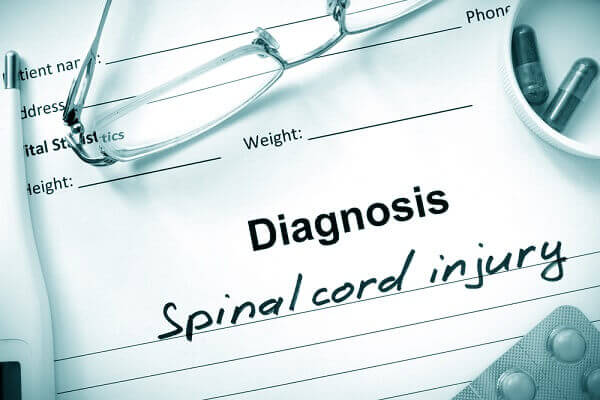
The cervical spine is the most vulnerable to injury because of its high mobility and exposure to sudden impacts. Despite this, injuries to the thoracic and lumbar spine can also lead to severe, lasting disabilities.
Key Takeaways
- The cervical (neck) and lumbar (lower back) regions are the most injury-prone areas of the spine, with the cervical area being particularly susceptible to accidents.
- Spinal cord injuries can profoundly affect quality of life, leading to long-term health complications and requiring extensive medical care.
- Legal avenues are available for those injured due to negligence, offering compensation for a range of damages including medical expenses, lost wages, and pain and suffering.
Understanding the spine’s vulnerability is key to grasping the severe impacts of spinal injuries, highlighting the necessity of both prevention and effective legal recourse.
Which Part of the Spine is Most Commonly Injured and Why?
Question: Which region of the spine is most vulnerable to injury, and what are the common causes of such injuries?
Answer: The cervical spine, or neck area, is the most commonly injured part of the spine. This vulnerability is primarily due to the cervical spine’s exposure to sudden movements and impacts, which can occur in accidents leading to conditions such as whiplash.
In more severe cases, these injuries can cause paralysis. Understanding the spinal anatomy and the function of its various regions, such as the lumbar and cervical areas, is crucial in appreciating why certain parts are more susceptible and the severe implications of these injuries.
Understanding Spinal Vulnerabilities: From Whiplash to Paralysis
The spine has multiple areas of vulnerability, but the most at-risk area for injury is around the neck. If you are involved in an accident, you may experience whiplash in that area of the neck. In more severe accidents you could suffer from paralysis.
To fully understand what makes the spine so vulnerable, you need to understand the various aspects of the spine, what those areas do, and how they are prone to injury.
In this article, we will go over the basic spinal anatomy, as well as your rights when you suffer spinal cord injuries, along with what type of compensation to expect.
Understanding Basic Spinal Anatomy
Understanding how the spine works do not require years of medical school. In fact, in the next few paragraphs, we will break down how the spine works and what areas are more prone to injury – especially in an accident.
Which Portions Of The Spine Are The Most Vulnerable To Injury?
The lumbar and cervical regions of the spine are particularly susceptible to injuries due to their structure and the range of motion they support.
The cervical spine, comprising the neck vertebrae, is prone to injury from sudden movements and impacts, often seen in whiplash cases.
The lumbar spine, located in the lower back, bears the weight of the upper body, making it vulnerable to strain and stress injuries, especially in scenarios involving heavy lifting or abrupt twisting movements.
Understanding the unique functions and risks associated with these spinal areas can help in preventing injuries and maintaining spinal health.
The Neck – at Risk for Strain and Serious Injury
At the base of your skull and where the spine begins, you have the cervical spine. Here you have seven vertebrae which extend into your upper back and neck region.
In a minor accident, you may experience ligament and tendon strain or muscle spasms in the area. Usually, these heal without surgical intervention alone just a few weeks post-accident.
Other common and more serious injuries to this area of the spine include:
These may require surgical intervention, and they can leave a person permanently disabled and suffering from chronic pain.
Middle of the Back – Thoracic Spine Anatomy
From your neck, you have the 12 vertebral areas that make up your upper and middle back regions, known as the thoracic spine. These also attach to your rib cage, and each level of your thoracic spine provides your body with stability.
Injuries to this area are rare unless you are in a serious, if not catastrophic, accident. When an accident is severe enough to crush the human body, thoracic injuries are more likely.
In this case, these areas can have poor blood supply, which leads to paralysis, stroke, and other severe, life-threatening complications.
Lower Back – the Most Prone
Your lower back, known as the lumbar, has five motion segments. The lower portions are at the highest risk for injury, and you could experience pain throughout the body and not just in that lower back area – such as pain that radiates down an arm or leg.
You may also suffer from severe muscle strain, spasms, and radiating pain in the extremities for weeks or even months after an injury.
A structural problem can result from a serious impact on the lower back, which may require surgical intervention.
Sacrum Region – the Lowest Portion of the Spine
The sacrum is just below the lumbar spine, which connects into the pelvic region of the body. Pain in these areas is common after car accidents, and in catastrophic injuries with crushed bodies, a shattered pelvis bone could be life-threatening.
Your Rights When You Suffer Spinal Cord Injuries in an Accident
Spinal cord injuries involve damage to the spinal cord, which includes the nerves inside the spinal column. When these injuries occur, the result can vary from partial to a full loss of control, sensation issues, and even leave a person quadriplegic or paraplegic.
The spinal cord handles numerous bodily functions as well, including regulating body temperature, bladder function, breathing, and sexual activity. When it becomes damaged, it can significantly affect a person for the rest of their life.
Accident victims may have numerous symptoms, a decreased quality of life, and severe health problems, all as a result of the damage to their spinal cord.
The Most Common Reasons for Severe Spinal Cord Injury
The most common reasons a person experiences severe spinal cord injuries include:
- Motor vehicle accidents
- Slip and fall accidents
- Intentional acts of violence
- Recreational sports
- Medical malpractice
When Spinal Cord Injuries Are Caused by Negligence, Victims May Seek Compensation
Spinal cord injury lawsuits require that someone’s negligence or malicious intent led to your injuries and spinal cord damage. When you base a case on negligence, you must show that the defendant was directly at-fault for your injuries and that their negligence was the cause of your damages. For example, you were hit by a drunk driver. The drunk driver was negligent by driving under the influence, and because of the accident, you suffered spinal cord damage.
What Type of Compensation Can You Receive?
Compensation for spinal cord injuries depends on the severity of the injury and how long it will affect a victim’s life. If a victim can recover from their injuries, they are not going to receive the same amount of compensation as someone with permanent injuries.
Some common types of damages victims can receive from spinal cord injury claims include:
- Medical Expenses – Medical expenses, especially with spinal cord injuries, are extensive. A person might need surgeries, physical therapy, long-term medical care, and they may spend days in hospitals for treatment and post-operative recovery. The specialists involved in the treatment and long-term care of a spinal cord injury are expensive as well, as these injuries require more than just a family physician’s care.
- Lost Wages – Those who suffer extensive spinal cord injuries might be unable to return to work for some time, and they can receive compensation for the wages lost during their time in recovery.
- Loss of Earning Capacity – If the spinal cord damage is so severe that it affects a victim’s ability to earn a living or return to work at all, then they can seek compensation for their loss of earning capacity as well.
- Pain and Suffering – The long-term physical pain, emotional distress, and mental anguish of these types of injuries can permanently scar a victim, and the court ensures they receive financial compensation for that suffering. While no dollar amount can take away the trauma, the funds for pain and suffering are designed to help return a victim to a financially whole state.
If you or a loved one suffered a serious spinal cord injury, and someone’s negligence caused the injury, you may be entitled to compensation. To explore your options, schedule a free case evaluation with the legal team from Brett McCandlis Brown & Conner PLLC. You can schedule today at 206-488-1611 or request more information online.


